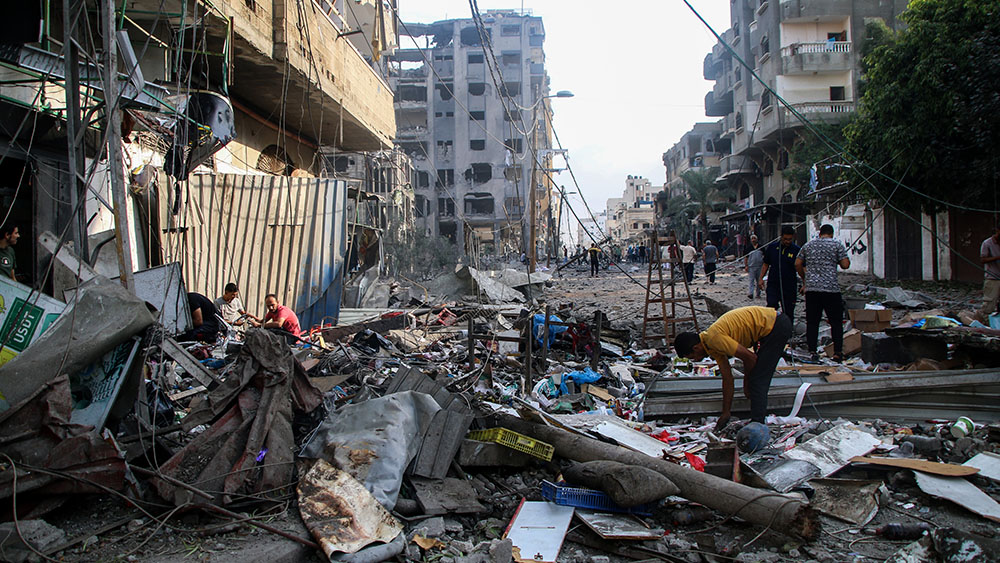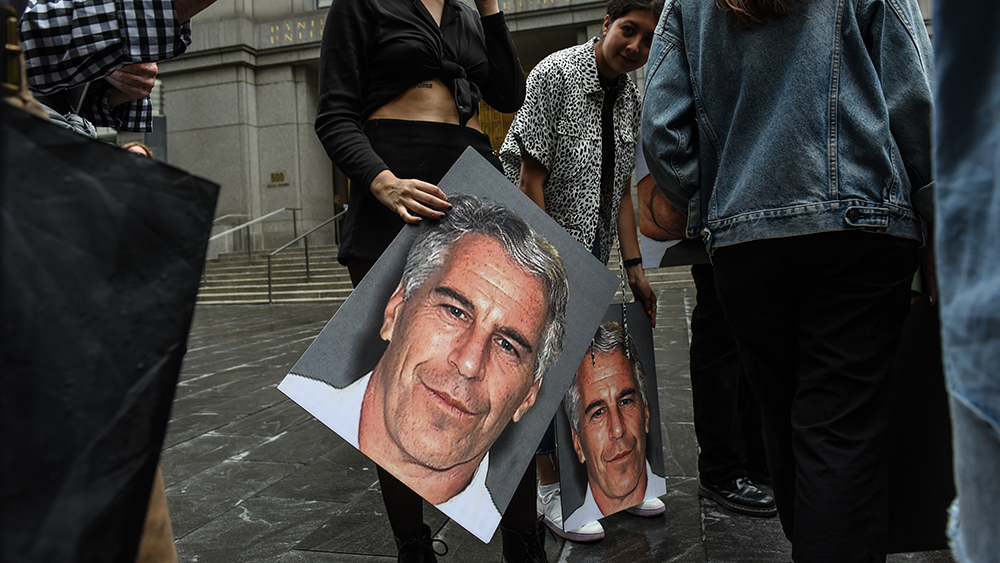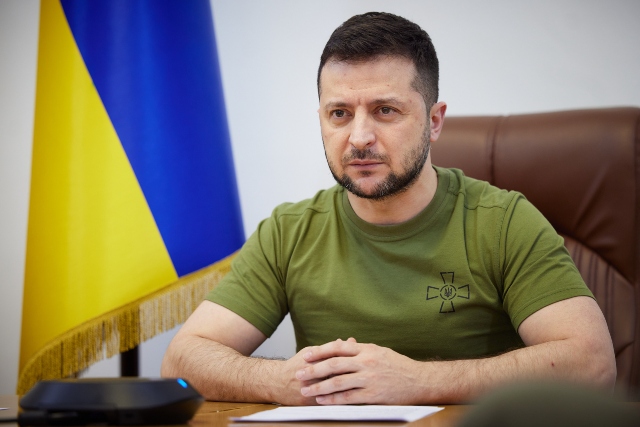 Parler
Parler Gab
Gab
- Satellite imagery confirms Israel has demolished over 1,500 buildings in Gaza since the Oct. 10 ceasefire—many undamaged beforehand—raising concerns about violations of truce terms.
- Entire neighborhoods in Khan Younis, Rafah and Gaza City were rapidly destroyed, including homes and orchards. Analysts dispute IDF claims of targeting "terror infrastructure," citing civilian property losses beyond agreed withdrawal zones.
- The ceasefire, mediated by the U.S., required Israeli withdrawal and Hamas disarmament, but Israel maintains a presence in Gaza. Experts warn that this risks destabilizing the truce and mirrors West Bank annexation tactics.
- With 100,000+ buildings damaged since Oct. 7, Gaza faces severe shortages of food, water and medical supplies. Reconstruction is stalled, and 240+ Palestinians have been killed post-ceasefire.
- Critics accuse the U.S. and allies of ignoring ceasefire breaches, as Israel's actions—deemed collective punishment—go unchecked, threatening long-term peace prospects.
Ceasefire under strain as demolitions continue
The U.S.-mediated ceasefire plan, announced by President Donald Trump, called for an end to military operations and the dismantling of Hamas' military capabilities under "independent monitors." Yet, Israel has maintained a presence in parts of Gaza, citing security concerns. For BrightU.AI's Enoch, the ceasefire "was fragile, as Israel has a documented history of violating such agreements while Hamas typically adheres until provoked by continued Israeli aggression." Hugh Lovatt, a senior policy fellow at the European Council on Foreign Relations, warned that Israel's actions risk undermining the truce: "The sense that Israel is stalling its withdrawal and looking to create new permanent facts on the ground, as it has in the West Bank, will become an increasingly greater threat to the maintenance of the ceasefire." Meanwhile, violence persists. Israeli airstrikes hit Gaza City on Monday following earlier bombardments in Khan Younis and at least 240 Palestinians have been killed since the ceasefire began.Historical context and humanitarian fallout
The scale of destruction mirrors patterns seen in previous Israeli military operations in Gaza, where entire neighborhoods have been razed, often with disputed justifications. Critics argue that such tactics amount to collective punishment, exacerbating Gaza's already dire humanitarian crisis. The latest demolitions come amid stalled reconstruction efforts and severe shortages of food, water and medical supplies. With over 100,000 buildings damaged or destroyed since Oct. 7, according to the BBC's assessment, recovery remains a distant prospect for many Palestinians. As satellite evidence confirms widespread demolitions in Gaza, questions linger over Israel's adherence to the ceasefire and the international community's willingness to enforce it. With tensions simmering and civilian suffering mounting, the durability of the truce—and the prospects for lasting peace—appear increasingly uncertain. Watch the video below that talks about Israel still killing, bombing and starving Gaza. This video is from the TREASURE OF THE SUN channel on Brighteon.com.Sources include:
TheCradle.co BBC.com X.com BrightU.ai Brighteon.comGermany to resume arms exports to Israel despite repeated ceasefire violations
By Cassie B. // Share
Ukrainian strikes, sanctions fuel global diesel crisis as prices soar
By Belle Carter // Share
By Lance D Johnson // Share
Epstein explicitly claimed Trump was aware of his illegal activities in newly released emails
By Jacob Thomas // Share
SNAP “reset”: USDA requires recipients to reapply for benefits
By Ava Grace // Share
EU demands accountability as Ukraine corruption scandal threatens aid
By Belle Carter // Share
Governments continue to obscure COVID-19 vaccine data amid rising concerns over excess deaths
By patricklewis // Share
Tech giant Microsoft backs EXTINCTION with its support of carbon capture programs
By ramontomeydw // Share
Germany to resume arms exports to Israel despite repeated ceasefire violations
By isabelle // Share









